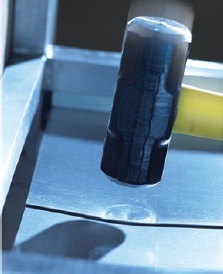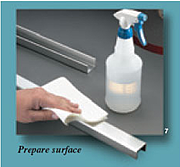Which Adhesive Fastener Works When Substrates Are Different?
Posted on Mon, Aug 25, 2014

So let's say you're team is developing a new medical device. Chances are the component mix is guaranteeing that you are fastening different substrate materials. Normally, there is no way around it. So which Adhesives should go into the fastener?
Is your base plastic or stainless? Is the component you're attaching encased in one of the other thousand of types of plastics? Once you know the base materials for your medical project, you’ve got to make each one work for you. This means preparing every surface effectively, plus choosing the right adhesive chemistry to ensure device integrity.
Why Does it Matter that Substrates are Different?
Choosing from the possible combinations of complex adhesive laminate solutions / polymers that will bond two different materials can be a challenge. Are you looking for a woven fastener or a nonwoven option? Will the solution be sewn-on or PSA? Then we have to consider your assembly line application process, all while we nail down the chemistry. Only then can we match the adhesive family to the different substrates.
But chemistry is still not the whole story. Other factors that affect which adhesive is chosen from within a family of adhesives include:
- will the bond also provide sealing?
- will the exposures include sterilization?
- will the device be reusable or disposable?
Bounce it off someone familiar with the functions / roles your adhesive fasteners can potentially play.
Gleicher Manufacturing Corp. has been working with innovators in the medical industry for nearly half a century as a 3M Preferred Converter. We understand what adhesives and fasteners work with which base materials.
You already know that surface preparation is critical to making  the final product come together - a clean dry surface is critical for a strong adhesive bond. At Gleicher, we chip in by focusing on things like preventing contamination on the substrate as well as dwell time.
the final product come together - a clean dry surface is critical for a strong adhesive bond. At Gleicher, we chip in by focusing on things like preventing contamination on the substrate as well as dwell time.
So we suggest starting a conversation with a Gleicher expert during R&D to help guide material selection and decide on the best cutting method or adhesive options for your application. Asking the right questions can give you a partner in innovation. Let our experts focus on the minutiae so you can keep your focus on innovation, where it belongs.
Not sure what questions to ask?
Check out Gleicher’s new free guide, which not only details the things you’ll need to share with your converter but how to forge a strong partnership. Learn the importance of verifying supplier capabilities and how to sort through the inventory-services agreement.
The guide also offers specific questions you should ask, including:
- What type of geometry does your application require?
- How large is the surface area you need to bond against?
- What’s your tolerance for chemical resistance in your process?
- How will you apply the fastener? Will you press it, peel it, attach it manually, or use an automated line?
A strong relationship with your converter can ensure that you get the right fastener for your base material, that you ultimately get the best final product possible.
